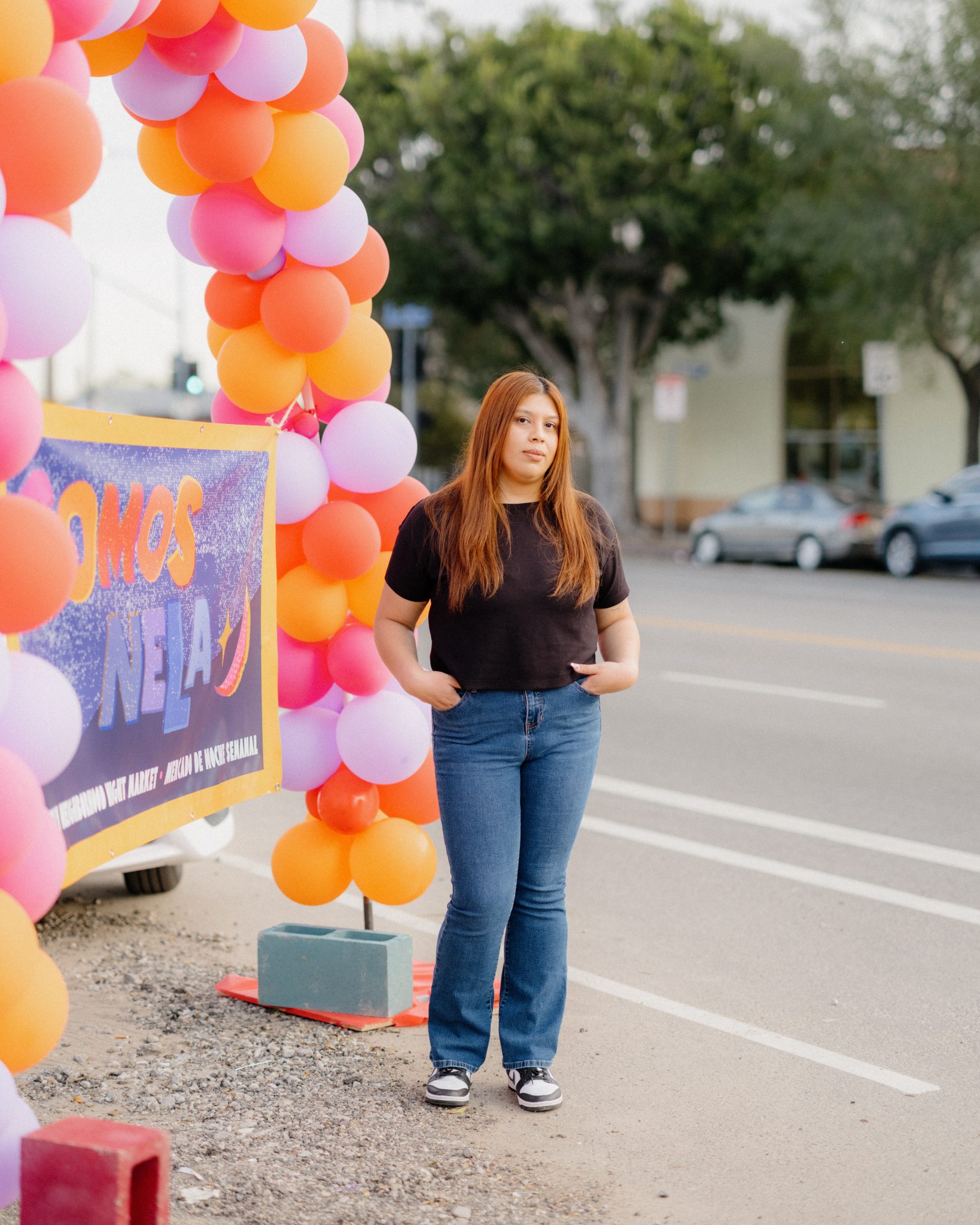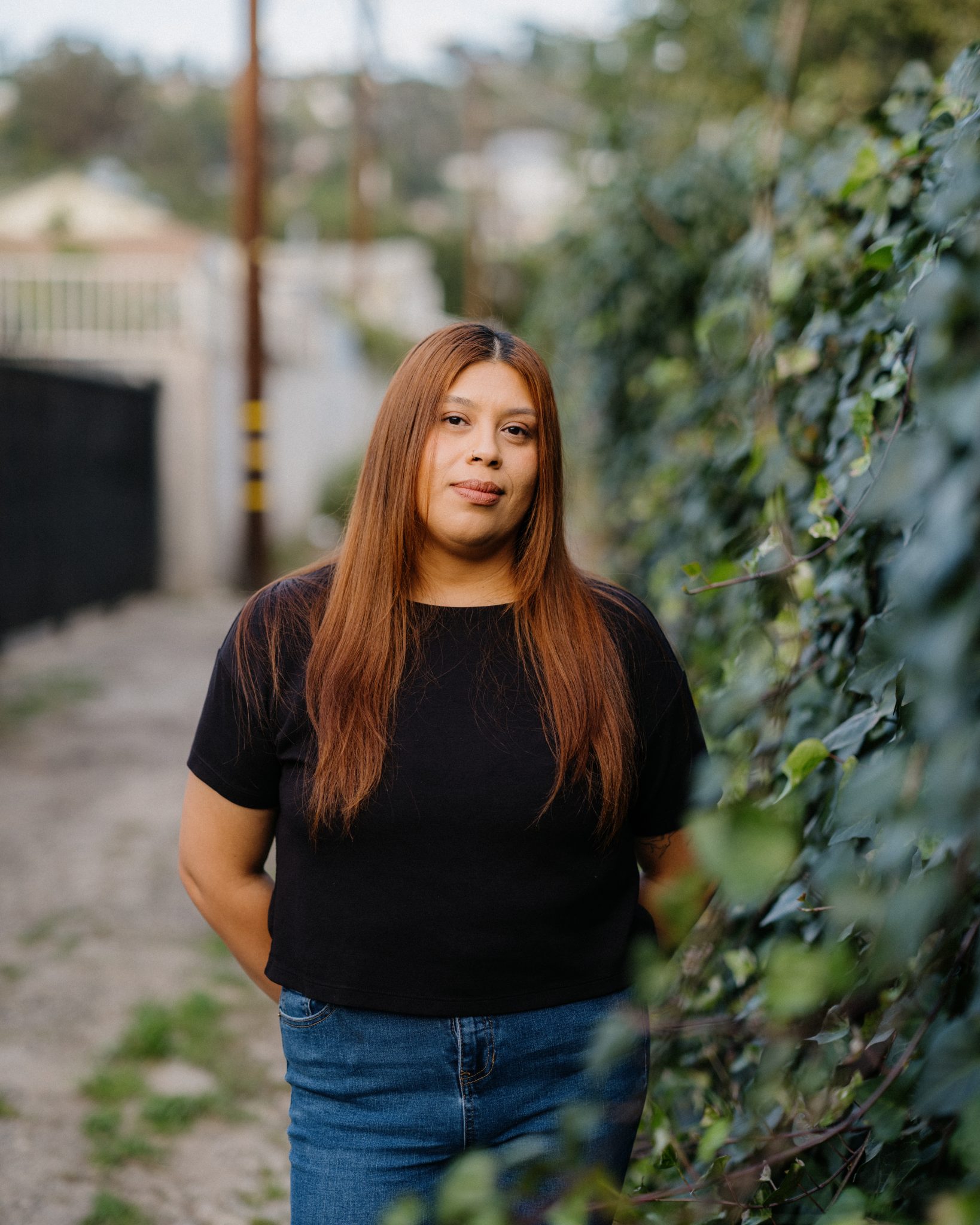FEATURED STORY: Lili Sanchez
Mourning a Neighborhood
Since she was born, Lili Sanchez has lived on the same street in Elysian Valley, a few houses down from the Elysian Valley Recreation Center. Almost like a second home to her, this park space has been foundational to her upbringing. She remembers spending many hours of the day there throughout her childhood, playing and hanging out with her cousins and friends from the neighborhood.
“I grew up going to the Elysian Valley [Rec Center] since I was three or four years old. I used to go to the daycare there. When I was 11 or 12, I joined the teen club, and that eventually helped me get a job there at the park.”
With the amount of time that Lili spent at the park, one might think that the Rec Center was Disneyland. But it was just your typical recreation center. What truly made it special was the community that Lili built there over the years.
“There wasn’t really much to do at the park. It was one of those things where you knew all your friends were there, so you just would go. Historically, this is a community where everybody knows each other. Everybody helps each other out.”
From daycare to teen club to park employment, here Lili developed the skills that she would use today as a case manager and social worker. Hanging out at the park taught her the importance of community spaces, as they provide residents with outlets to get together and develop relationships with each other. Even though the park was very bare bones, the people are what truly made the park, which functioned as a community hub—offering a place for children to play and grow, parents to socialize with each other, and neighbors to unite.
As she grew older, Lili started to notice some changes in her beloved neighborhood. Friends that she would frequently see at the park would move away, and she would stop seeing them as often. To go from seeing a neighbor or a friend almost daily to losing contact with them was an unpleasant experience. And with no phones or social media, the process of forgetting was all too easy.
It was also around this time that Lili first heard the term “gentrification” when one of her high school teachers brought it up in class, pointing out some of the signs of this process.
“I knew very little about what was really going on and the effects of gentrification. I didn’t hear about gentrification until I was a senior in high school. It was then that I started paying more attention.”
When neighborhoods are subject to decades of disinvestment from the city and other forms of government, it makes it all that much easier for developers to come in and buy up property for cheap, and remake or reinvent the neighborhood. In the case of Elysian Valley, disinvestment plus years of gang violence made the neighborhood undesirable in the eyes of the city, but not to its residents. Gentrification is a process—it doesn’t occur overnight, but one usually begins to take notice when it’s too late, when market forces are too powerful to stop.
Lili began to notice a drastic shift in the makeup and affordability of her community that became more apparent around the same time as the Covid-19 pandemic. Higher-income individuals were coming in, seeking homes and stability during the pandemic, and they were lured by the up-and-coming charm of Elysian Valley as an artistic enclave with its new coffee shops, luxury apartments, and, of course, the bike path on the LA River.
“When the pandemic hit, the neighborhood had this 360-degree shift, and it came at a hundred miles per hour. That also changed a lot because now I can come outside and walk my dog, but I’m thinking, “I don’t know half of these people, and they don’t want to talk to me, and I’m not going to talk to them.”
The Covid pandemic seemed to accelerate many of the gentrification forces that were already present in Elysian Valley. The social isolation combined with the uncertainty and fear that the pandemic brought, meant that there was a lot of disconnect between newer and longtime residents. There was no opportunity for residents to connect and get to know each other, and there didn’t seem to be any motivation to do so. A community that was once tight-knit was loosening at the seams.
For long-term residents who have lived through the horrors of gang violence as well as disinvestment and neglect from the city, it’s a mixed feeling to see your neighborhood change for the better, but to not have your former neighbors be able to enjoy it as well. The improvements that occur in gentrifying neighborhoods all across the country seem to be for those who are able to afford them, and the individuals who were displaced continue to face the same fate elsewhere. Lili struggles with this new reality.
“A lot of people in the neighborhood will say they’re very happy with the changes compared to where the neighborhood was 20 years ago, when it was dangerous to even live here. I appreciate the safety, but there’s also a part for me that questions this ‘better’ direction, it comes at the cost of who? Certain people can’t afford to live here. I can’t afford to live here anymore; I cannot buy a house here.
We used to say, “Oh, I’m gonna make it out the hood.” And then you got to a point where making it out the hood meant that you had to be able to afford a house in Elysian Valley, which is crazy.”
Gentrification has changed the makeup of the community, increasing its median household income and housing prices. Flipped homes regularly fetch more than their million-dollar asking prices, and rents continue to rise. From the outside looking in, the demographics of this changed community hide a reality that’s still very present, one that can be seen at the same park that Lili grew up at. For low-income families, accessing social services is becoming increasingly difficult as these opportunities have moved elsewhere.
“The park used to offer scholarships for summer camp. At some point, the department felt like there was no longer a need for scholarships. There also used to be subsidized programs that are no longer around, because they felt there was no need for that anymore because people are paying for these services now. But, there are still people here that need it, that are low-income.
That’s one of my biggest concerns when it comes to gentrification, because my neighbors still can’t afford their rent. It makes me really sad because we’re still here, and we still need these services.”
The Elysian Valley Recreation Center is still there in its same location, but it’s different from the one that molded Lili into who she is today. The same can be said about her neighborhood. From time to time, she still stands on her porch to get a good view of the park just to see who’s there and if there are any familiar faces. But many of these faces have moved, been priced out, or displaced.
It’s easier now to keep in contact with them via social media or by text, and Lili has the following message for them:
“You’re still a part of this community. You might have parents or family that still live here, you contributed to the history of Elysian Valley, and you’re still part of it.”
Lili Sanchez is a lifelong resident of Elysian Valley, a community near and dear to her heart. She grew up spending most of her days at the nearby Elysian Valley Recreation Center where she formed friendships and built community with other local teens. Her passion for her neighborhood has informed her professional career, having worked at the Rec Center, nearby Allesandro Elementary School, local non-profit LA Más, and currently as a case manager for unhoused individuals. She’s been instrumental in the creation of NELA Mercadito, a volunteer-run food distribution in its fifth year and SOMOS NELA Night Market in Cypress Park, which features local Northeast LA vendors selling a variety of goods, food items, and services.
RELATED STORIES

Kruegermann Pickles
Carl and Greg Kruegermann are brothers who grew up in Elysian Valley (not Frogtown!) in a East German immigrant family whose livelihood was to make pickles. Their family’s business employed members of the community to make traditional dill pickles in the German style. At the end of 2022, the brothers face the devastating truth that…

Making Art in Elysian Valley
For nearly thirty years, from 1980-2010, Chicano artist Frank Romero worked out of a colorful brick studio and gallery in Elysian Valley. It was here where Frank’s art universe of bright cars, looping freeways, staggering palm trees, and brightly colored canvases came to life. It was also here where Frank found a new muse in…

“Paayme” sung by Lazaro Arvizu
Lazaro Arvizu Jr. is an artist, educator, musician, and researcher dedicated to the culture of the First Peoples of Los Angeles. In the video he performs the song “Paayme”, meaning “West” in the Tongva language, which he wrote with his mother Virginia Carmelo. With the LA River as a backdrop, Lazaro sings about moving West…

Learning from Nature
For more than 34 years, Harry Boyajian has directed and managed site remediation of polluted lands all over the United States. His work has taken him from North Dakota to Arizona, and all up and down California where he’s based. Closer to home, Harry has worked extensively on sites adjacent to the LA River, post-industrial…


